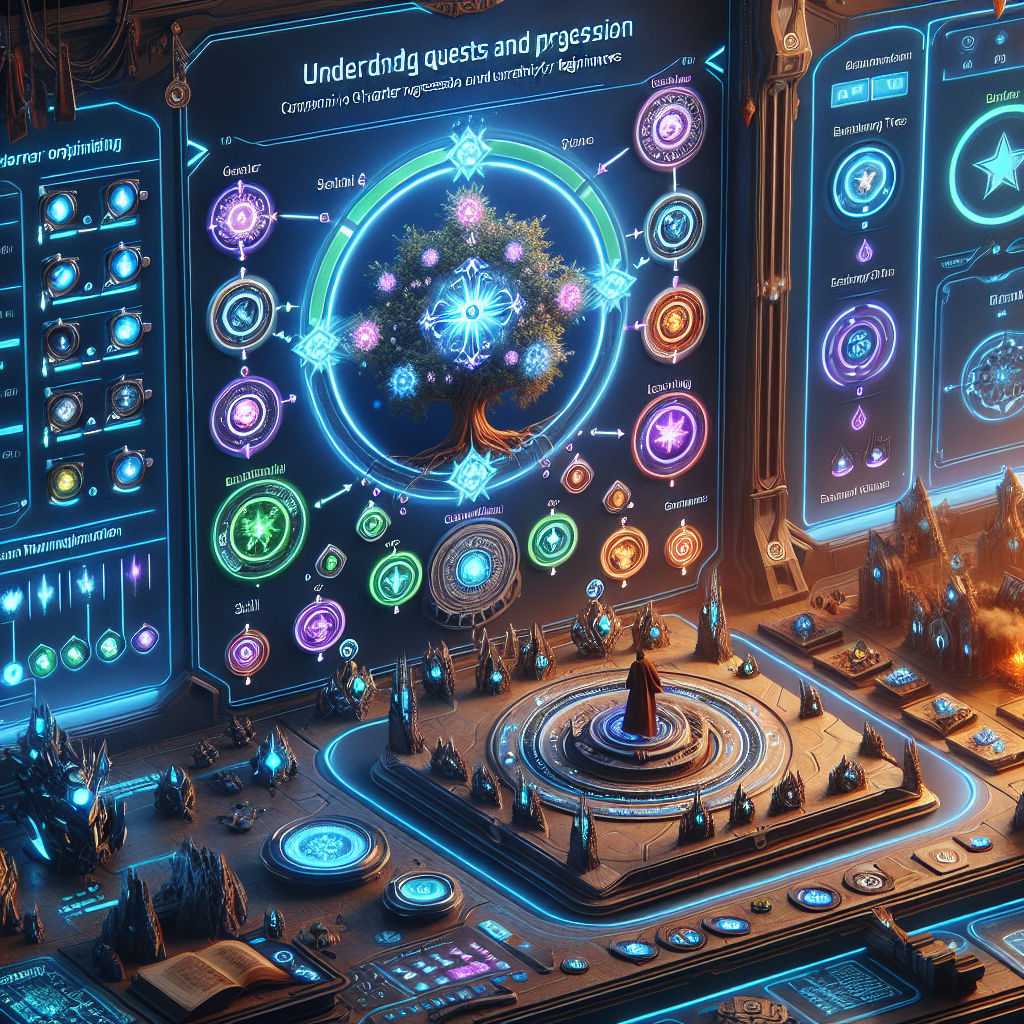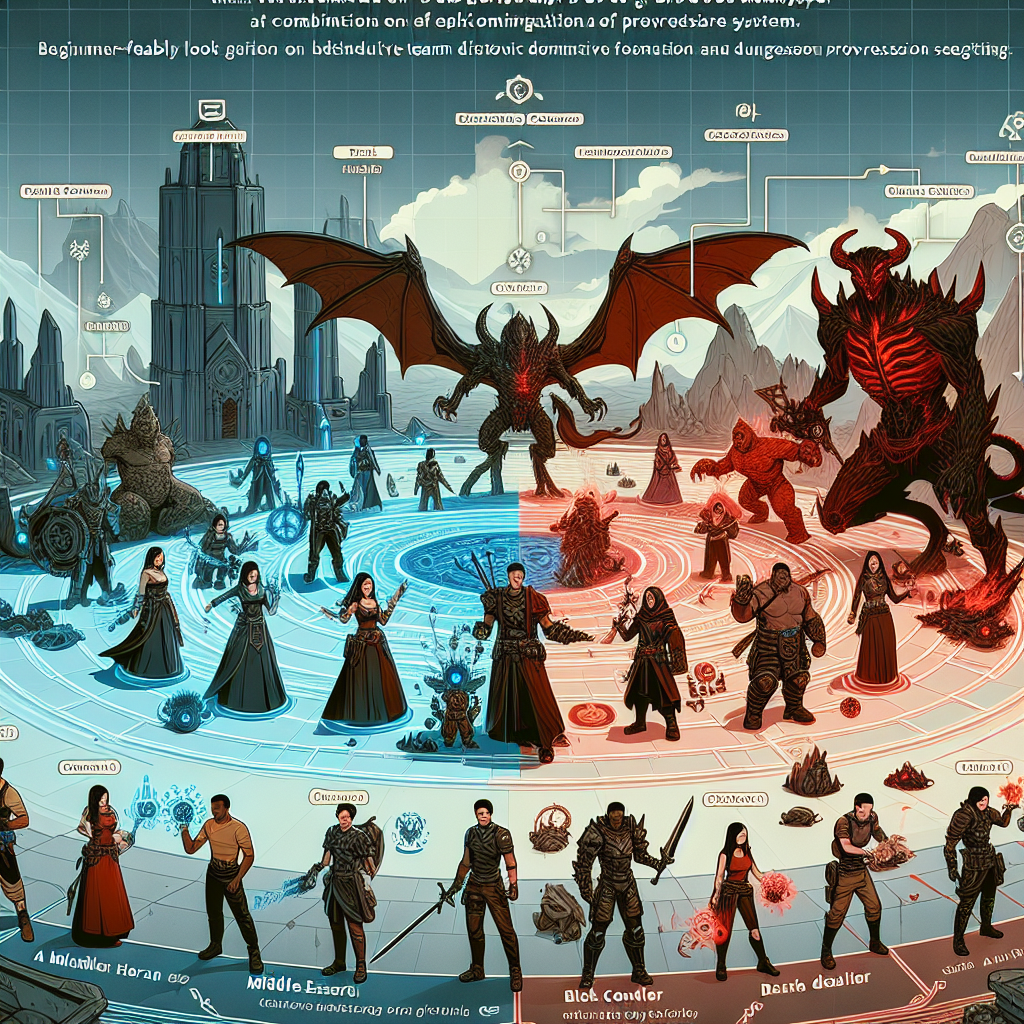A Step-by-Step Starter's Guide to Understanding Quests and Progression
In the ever-evolving world of AI tools and side hustles, mastering the concepts of quests and progression can be a game-changer for entrepreneurs, freelancers, and tech enthusiasts looking to leverage these powerful technologies for profit. Whether you're building a conversational AI assistant, automating business processes, or exploring generative AI for content creation, understanding how to effectively structure quests and progression can significantly enhance the user experience and drive engagement.
In this comprehensive guide, we'll dive deep into the world of quests and progression, equipping you with the knowledge and strategies to implement these concepts seamlessly in your AI-powered side hustles and projects. From defining key terms to outlining practical implementation steps, we'll cover everything you need to know to take your AI endeavors to new heights.
Understanding Quests and Progression
At the heart of any successful AI-driven side hustle or project lies the concept of quests and progression. Quests, in the context of AI, refer to the series of tasks or challenges that users must complete to achieve a specific goal or objective. Progression, on the other hand, describes the process of advancing through these quests, unlocking new features, capabilities, or rewards along the way.
The Importance of Quests and Progression
Quests and progression serve several critical functions in the realm of AI-powered side hustles and projects:
- User Engagement: Well-designed quests and progression systems can keep users engaged, motivated, and coming back to your AI-driven application or service. By presenting a clear path forward and offering incremental rewards, you can foster a sense of accomplishment and encourage users to continue exploring and interacting with your AI tools.
- Skill Development: Quests can be structured to gradually introduce new concepts, features, or techniques, allowing users to build their skills and expertise over time. This step-by-step approach can be particularly valuable for beginners or users who are new to the AI tools or side hustle you're offering.
- Personalization and Customization: Quests and progression systems can be tailored to individual user preferences, behaviors, and goals, enabling you to create a more personalized experience. By tracking user progress and adapting the quests accordingly, you can ensure that your AI-driven offerings remain relevant and valuable to each user.
- Monetization Opportunities: Incorporating quests and progression into your AI-powered side hustle can open up new revenue streams, such as offering premium content, unlocking advanced features, or providing access to exclusive tools or resources. This can be a powerful way to monetize your AI expertise and create a sustainable business model.
Key Concepts in Quests and Progression
To effectively design and implement quests and progression in your AI-driven side hustles, it's essential to understand the following key concepts:
Objectives and Milestones
Every quest should have a clear and measurable objective, whether it's mastering a specific AI technique, completing a complex task, or unlocking a new feature. These objectives serve as milestones along the user's journey, providing a sense of progress and achievement.
Challenges and Obstacles
Quests typically involve a series of challenges or obstacles that users must overcome to advance. These can range from technical hurdles, such as learning a new AI API or troubleshooting model performance, to more practical challenges, like optimizing workflow or scaling AI-powered applications.
Rewards and Incentives
Offering rewards and incentives is a crucial aspect of quests and progression. These can include virtual items, badges, discounts, or even real-world prizes that motivate users to complete tasks and continue their AI-driven journey.
Branching and Decisions
Quests can be designed with branching paths, allowing users to make decisions that influence their progression. This can create a sense of agency and personalization, as users feel empowered to shape their own AI-driven experience.
Feedback and Progression Tracking
Providing clear and immediate feedback on user progress is essential for maintaining engagement and motivation. This can be achieved through progress bars, level indicators, or other visual cues that allow users to track their advancement.
Implementing Quests and Progression in Your AI-Powered Side Hustle
Now that you have a solid understanding of the key concepts behind quests and progression, let's explore the step-by-step process of incorporating these elements into your AI-driven side hustle or project.
Step 1: Define Your Objectives and Milestones
Begin by clearly defining the overarching objectives and milestones you want your users to achieve. These should align with the overall goals of your AI-powered side hustle, whether it's building a successful conversational AI assistant, automating business processes, or exploring generative AI for content creation.
Consider breaking down your primary objectives into smaller, actionable steps that users can complete to feel a sense of progress. For example, if your goal is to create a highly accurate sentiment analysis model, your milestones might include tasks like:
- Familiarize yourself with the fundamentals of sentiment analysis
- Collect and preprocess a suitable dataset for training
- Implement a basic sentiment analysis model using a popular AI library
- Fine-tune the model to achieve a target accuracy score
- Deploy the sentiment analysis model in a real-world application
By defining clear objectives and milestones, you'll provide users with a roadmap for their AI-driven journey, making it easier for them to understand the path forward and stay motivated.
Step 2: Design Engaging Quests and Challenges
With your objectives and milestones in place, it's time to design the quests and challenges that users will need to overcome to progress. These quests should be engaging, educational, and tailored to the specific needs and skill levels of your target audience.
Consider incorporating a variety of quest types, such as:
- Tutorial Quests: These quests focus on teaching users the fundamental concepts, tools, and techniques required to succeed in your AI-powered side hustle. They can include step-by-step guides, interactive demos, and knowledge checks.
- Skill-Building Quests: These quests challenge users to apply their knowledge and skills to solve real-world problems or complete complex tasks, gradually increasing in difficulty as users progress.
- Exploration Quests: These quests encourage users to discover new features, capabilities, or use cases of your AI tools, fostering a sense of curiosity and experimentation.
- Optimization Quests: These quests task users with improving the performance, efficiency, or scalability of their AI-powered applications, helping them become more proficient power users.
Remember to incorporate branching paths and decision points that allow users to personalize their progression and feel a sense of agency in their AI-driven journey.
Step 3: Implement Rewards and Incentives
Rewards and incentives play a crucial role in keeping users engaged and motivated throughout their quest for AI mastery. Consider incorporating a variety of rewards, such as:
- Virtual Items: These can include badges, certificates, or virtual trophies that users can display to showcase their achievements.
- Discounts or Promotions: Offer discounts on premium features, upgraded subscriptions, or complementary AI-powered tools and services.
- Exclusive Access: Grant users early access to new AI features, beta programs, or invite-only communities.
- Real-World Prizes: For particularly ambitious or challenging quests, consider offering tangible rewards, such as gift cards, merchandise, or even cash prizes.
By implementing a well-designed rewards system, you'll not only motivate users to continue their AI-driven journey but also create opportunities for monetization and recurring revenue.
Step 4: Provide Meaningful Feedback and Tracking
Effective feedback and progress tracking are essential for maintaining user engagement and ensuring a seamless progression experience. Implement features that allow users to easily monitor their advancement, such as:
- Progress Bars: Visualize user progress through quests and milestones, providing a clear sense of how far they've come and how much more they have to achieve.
- Level Indicators: Use a leveling system to signify user advancement, unlocking new features, tools, or content as they progress.
- Achievement Notifications: Celebrate user accomplishments with on-screen notifications, emails, or in-app messages that recognize their milestones and encourage them to keep going.
- Leaderboards or Competitive Elements: Consider incorporating leaderboards or other competitive elements to foster a sense of friendly rivalry and challenge users to outperform their peers.
By providing users with clear and immediate feedback on their progress, you'll reinforce their sense of achievement and keep them motivated to continue exploring and mastering your AI-powered side hustle.
Ethical Considerations and Best Practices
As you design and implement quests and progression systems for your AI-powered side hustle, it's essential to consider the ethical implications and adhere to best practices to ensure a positive user experience and maintain trust.
Ethical Considerations
- Transparency and Fairness: Ensure that your quests and progression systems are transparent, fair, and accessible to all users, regardless of their background or skill level.
- Data Privacy and Security: Carefully handle any user data collected through your quests and progression systems, adhering to data privacy regulations and implementing robust security measures.
- Addictive Behavior Avoidance: Design your quests and progression systems to avoid exploiting addictive tendencies or creating unhealthy obsessions with completing tasks or earning rewards.
- Inclusive and Diverse Representation: Strive to create quests and progression systems that are inclusive and representative of diverse user backgrounds, perspectives, and abilities.
Best Practices
- User-Centric Design: Keep the user experience at the forefront of your quest and progression design, prioritizing ease of use, intuitive navigation, and a clear sense of purpose.
- Gradual Difficulty Scaling: Introduce challenges and obstacles in a gradual, incremental manner, ensuring that users feel a sense of progress and accomplishment as they advance.
- Flexibility and Adaptability: Build in the ability to customize or adapt your quests and progression systems based on user feedback, performance data, and evolving needs.
- Gamification Principles: Leverage proven gamification techniques, such as points, leaderboards, and time-based challenges, to create a more engaging and motivating experience.
- Continuous Improvement: Regularly review and iterate on your quests and progression systems, incorporating user feedback and performance analytics to optimize the experience over time.
By adhering to these ethical considerations and best practices, you can create quests and progression systems that not only drive user engagement and success but also maintain the trust and confidence of your AI-powered side hustle community.
Key Takeaways
In conclusion, understanding and implementing quests and progression is a powerful way to enhance the user experience and drive engagement in your AI-powered side hustles and projects. By defining clear objectives, designing engaging challenges, offering meaningful rewards, and providing transparent feedback, you can create a seamless and rewarding journey for your users as they master the art of AI.
Remember to always prioritize ethical considerations and best practices to ensure a positive and sustainable user experience. By doing so, you'll not only cultivate a loyal user base but also position your AI-driven side hustle for long-term success and growth.





